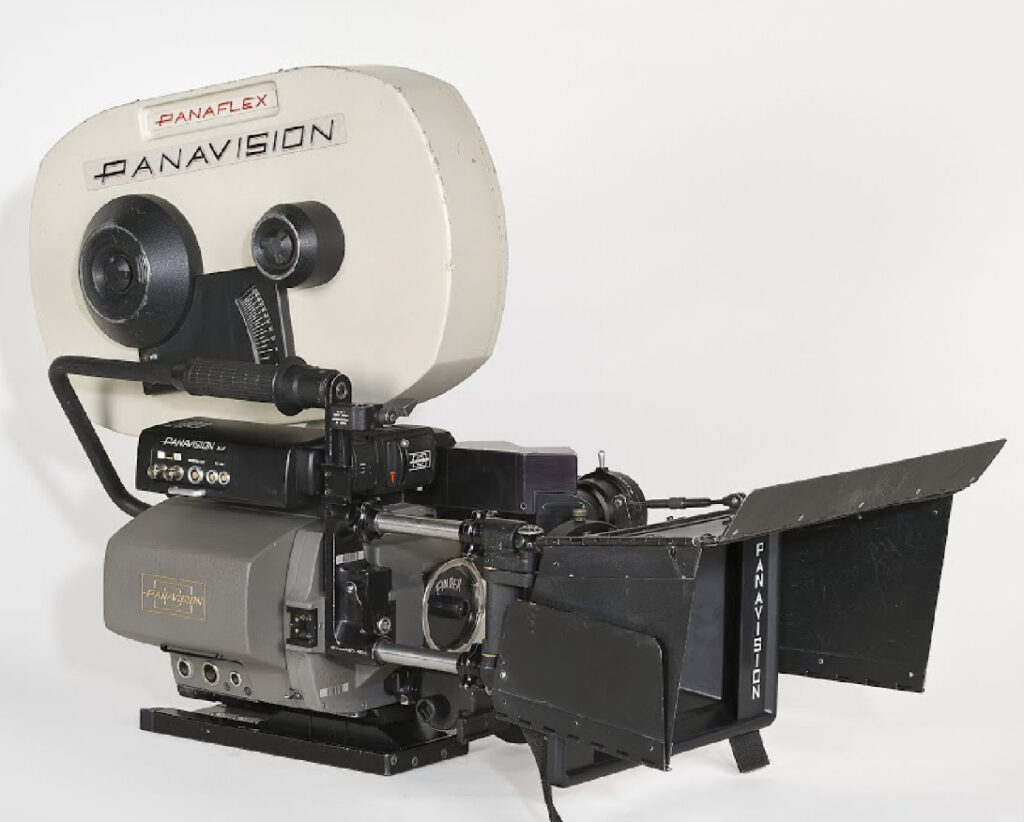The art of filmmaking owes much of its evolution to advancements in camera technology, and one name that stands out in the history of cinema is Robert E. Gottschalk, the visionary behind Panavision. Gottschalk’s innovative spirit revolutionized the way films were shot, introducing cutting-edge cameras and lenses that continue to define the cinematic experience today. Among Panavision’s most iconic creations are the Panaflex Platinum and Super Panavision, two groundbreaking systems that cemented the company’s status as an industry leader.
This article explores the history, features, and impact of the Panaflex Platinum and Super Panavision cameras, as well as Gottschalk’s contributions to filmmaking technology.
The Visionary: Robert E. Gottschalk
Robert E. Gottschalk (1918–1982) was an American inventor, entrepreneur, and the founder of Panavision. His career began modestly in the 1950s, when widescreen formats like Cinemascope were gaining traction. Recognizing the limitations of existing systems, Gottschalk developed a new type of anamorphic lens that eliminated the distortion and artifacts commonly found in Cinemascope films.
Panavision was born out of this breakthrough, and it quickly became synonymous with high-quality optics and cutting-edge camera systems. Gottschalk’s vision extended far beyond lenses, leading to the development of some of the most versatile and advanced film cameras in the industry.
The Panavision Panaflex Platinum: A Technological Marvel
The Panaflex Platinum, introduced in 1986, is one of Panavision’s most celebrated cameras. Designed for professional cinematographers, the Panaflex Platinum became a favorite for its versatility, durability, and precision.
Key Features of the Panaflex Platinum
Lightweight and Portable:
Unlike many earlier film cameras, the Panaflex Platinum was designed to be lightweight and ergonomic, making it ideal for handheld and Steadicam shots. Its portability allowed filmmakers to explore dynamic camera movements without sacrificing image quality.
High-Speed Functionality:
The Panaflex Platinum could shoot at frame rates ranging from 4 to 120 frames per second, providing filmmakers with unparalleled flexibility. This feature was particularly useful for action sequences and slow-motion shots.
Quiet Operation:
One of the standout features of the Panaflex Platinum was its near-silent operation. This made it a preferred choice for dialogue-heavy scenes and on-location sound recording, eliminating the need for extensive post-production sound work.
Modular Design:
The camera’s modular design allowed cinematographers to customize it according to their specific needs. Accessories like viewfinders, magazines, and matte boxes could be easily attached or replaced, enhancing its adaptability.
Exceptional Optics:
Paired with Panavision’s industry-leading lenses, the Panaflex Platinum delivered sharp, distortion-free images with excellent color reproduction and depth of field control.
Improvement on Filmmaking
The Panaflex Platinum quickly became a favorite among filmmakers, used in blockbusters like Titanic (1997), Gladiator (2000), and The Dark Knight (2008). Its reliability and versatility made it a go-to camera for both studio productions and independent films, solidifying Panavision’s reputation as a leader in the field.
Super Panavision: Redefining the Cinema Experience
While the Panaflex Platinum revolutionized film cameras, the Super Panavision system redefined how movies were projected and experienced. Introduced in the late 1950s, Super Panavision was a response to the demand for widescreen formats that offered higher resolution and immersive visuals.
What Is Super Panavision?
Super Panavision was a 70mm film format that used spherical lenses, unlike the anamorphic lenses employed in Cinemascope. This approach eliminated distortion and provided unparalleled clarity, making it ideal for epic films and visually stunning landscapes.
70mm Film Format:
Super Panavision used a large 70mm film stock, which offered a resolution far superior to the standard 35mm format. This allowed filmmakers to capture intricate details, making it perfect for films with expansive sets and complex visual effects.
Widescreen Aspect Ratio:
The system produced an aspect ratio of 2.20:1, creating a wide, immersive frame that became synonymous with epic storytelling.
Spherical Lenses:
Unlike anamorphic systems, which compress images horizontally, Super Panavision used spherical lenses that captured images without distortion. This resulted in natural-looking visuals with consistent sharpness across the frame.
Vivid Color and Depth:
The large film stock allowed for greater color depth and dynamic range, making Super Panavision films visually striking.
Notable Films Shot in Super Panavision
Some of the most iconic films in cinematic history were shot using Super Panavision, including:
•Lawrence of Arabia (1962): Known for its breathtaking desert landscapes, the film showcased the full potential of the format.
•2001: A Space Odyssey (1968): Stanley Kubrick used Super Panavision to capture the vastness of space with unprecedented clarity.
•West Side Story (1961): The format brought vibrancy and depth to the film’s dynamic choreography and urban settings.
Legacy of Super Panavision
Although the system was eventually phased out due to the rise of digital formats, its influence remains undeniable. Many contemporary filmmakers continue to draw inspiration from the format’s visual style, and 70mm film has seen a resurgence in recent years thanks to directors like Christopher Nolan and Quentin Tarantino.
Robert Gottschalk’s Lasting Impact on Cinema
Robert Gottschalk’s contributions to filmmaking extend far beyond the Panaflex Platinum and Super Panavision. His innovations revolutionized the industry, enabling filmmakers to push the boundaries of storytelling and visual expression.
Advancements in Optics
Gottschalk’s focus on improving lens technology ensured that Panavision remained at the forefront of the industry. The company’s lenses are renowned for their precision, quality, and ability to handle challenging lighting conditions.
Commitment to Filmmakers
Gottschalk’s philosophy centered on empowering filmmakers by providing them with the tools they needed to bring their visions to life. This commitment to excellence earned Panavision a reputation as the go-to brand for Hollywood’s biggest productions.
A Legacy of Innovation
Even after Gottschalk’s passing in 1982, Panavision continued to build on his legacy, developing digital systems like the Millennium DXL2 that combine the company’s legendary optics with state-of-the-art digital technology.
Impression
The Panavision Panaflex Platinum and Super Panavision systems are testaments to Robert E. Gottschalk’s ingenuity and dedication to the art of filmmaking. These innovations not only elevated the technical standards of the industry but also empowered filmmakers to tell more ambitious and visually stunning stories.
From the sweeping vistas of Lawrence of Arabia to the dynamic action of The Dark Knight, Gottschalk’s contributions have left an indelible mark on cinema. As filmmakers continue to embrace new technologies, the legacy of Panavision—and the visionary who created it—remains a cornerstone of cinematic history.
No comments yet.








